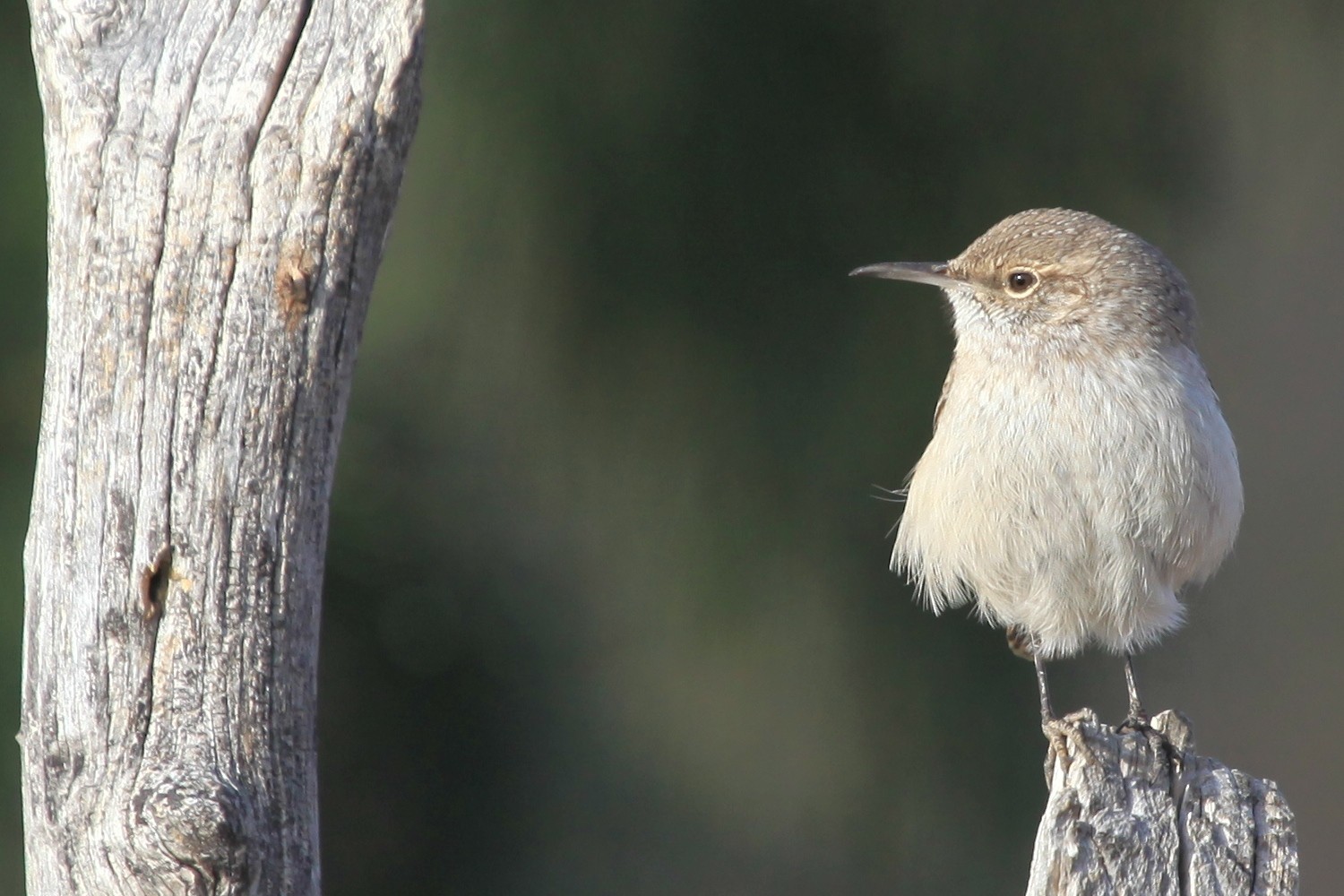Rock Wren
A species of Rock Wrens Scientific name : Salpinctes obsoletus Genus : Rock Wrens
Rock Wren, A species of Rock Wrens
Botanical name: Salpinctes obsoletus
Genus: Rock Wrens
Content
Description People often ask General Info
 Photo By panza-rayada , used under CC-BY-SA-3.0 /Cropped and compressed from original
Photo By panza-rayada , used under CC-BY-SA-3.0 /Cropped and compressed from original Description
Measurements: Length: 4.9-5.9 in (12.5-15 cm) Weight: 0.5-0.6 oz (15-18 g) Wingspan: 8.7-9.4 in (22-24 cm) They have grey-brown upperparts with small black and white spots and pale grey underparts with a light brown rump. Additional distinctive features include a light grey line over the eye, a long slightly decurved thin bill, a long barred tail and dark legs. They actively hunt on the ground, around and under objects, probing with their bill as their extraction tool. They mainly eat insects and spiders. Its song is a trill that becomes more varied during the nesting season. These birds are permanent residents in the south of their range, but northern populations migrate to warmer areas from the central United States and southwest Canada southwards. They are occasional vagrants in the eastern United States. During the breeding season, they move to dry, rocky locations, including canyons, from southwestern Canada south to Costa Rica to build cup nests in a crevice or cavity, usually among rocks. 
Size
13-15 cm (5-6 in)
Colors
Brown
Black
Bronze
Gray
White
Life Expectancy
6 years
Nest Placement
Ground
Clutch Size
4 - 8 eggs
Incubation Period
2 - 3 broods
Number of Broods
14 - 16 days
Nestling Period
14 - 16 days
Feeding Habits
Rock Wren primarily consumes ground-dwelling insects like ants, grasshoppers, and beetles, including aquatic insects. Foraging involves probing crevices while hopping along the ground, rarely flying after prey. They also eat seeds, plant matter, and opportunistically steal from spiderwebs. They derive moisture from food, as no drinking has been observed.
Habitat
Rock Wren are typically found in arid, rocky areas, ranging from desert lowlands to mountain terrains exceeding 12,000 feet. They show a preference for regions with sparse vegetation and are adaptable to diverse rocky environments—such as shrubsteppe with sagebrush, rock outcroppings, and canyon walls. Habitats favored by rock Wren span across rocky shrublands, cliff-sides, talus slopes, ravines, and even human-altered landscapes like quarries and construction sites. They migrate seasonally, utilizing similar rugged terrains and occasionally appearing in agricultural fields or grasslands.
Nest Behavior
Both sexes of rock Wren partake in selecting the site and constructing the nest. Males gather most materials and females arrange them. Nest building includes a unique stone foundation that can extend into a walkway. Nesting activities, including egg-laying and subsequent parental care, follow the species-specific seasonal patterns.
Nest Characteristics
Rock Wren's nest is typically located on a stone surface within or between rocks. It consists of a loose cup made from grass, bark, moss, and hair, lined with rootlets, wool, and spider silk. A foundation of small stones and sticks creates a walkway that may conceal the nest entrance. Average size: 3.5 inches wide, 1.3 inches deep, with a cup 2.6 inches wide and 1.1 inches deep.
Dite type
Insectivorous
People often ask
General Info
Feeding Habits
Bird food type
Sounds
Song
Recording location: Mexico
Song
Recording location: Mexico
Call
Recording location: United States
Song
Recording location: United States
Behavior
The generally monogamous rock Wren manifests mixed behaviors in its daily life, from males presenting food during courtship to defending their rough 4.5-acre territories with vigilance and aggression. They exhibit frequent, body-bobbing threat displays and engage in aerial or ground confrontations if necessary. While both sexes partake in nurturing their young, rock Wren tend to live solitarily and non-territorially during winter, maintaining distance from others in their preferred habitats. Unique among their behaviors is the defense against House Wrens, known egg predators, highlighting their protective nature.
Species Status
Not globally threatened.